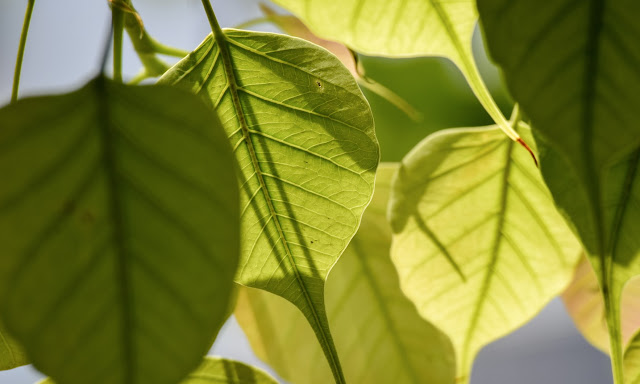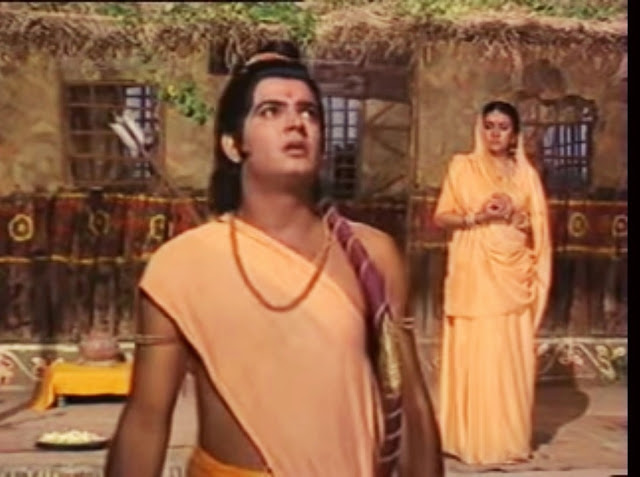The connection between humans and nature is inseparable. The environmental consciousness emerging today is a response to the environmental damage caused by technological developments. Still one can see that in ancient India people had shown much respect to the environment in which they survive.
Hinduism is a religion that has an ecologically sensible theory. The Vedas, Upanishads, Puranas, Ramayana, and Mahabharata are such ancient sacred texts that contain notes for keeping eco-friendly balance and the safety of the environment. Man is guided to live in complete harmony with nature. Man is the creation of five components e.g. earth, water, fire, sky, and air. If all five elements are equally balanced the human body remains healthy. Any inequality creates a breakdown in the body. Despite it, man is influenced by other factors, for example, the kind of his diet, water, and climate.
Philosophy of Environment in the Vedas-
They were successful in connecting their life with the tangible surroundings and continuing patterns of the bonds with them. The Rgveda which is the oldest of the four Vedas comprises mantras addressed to gods and goddesses such as Indra, Agni, Varuna, Surya, Soma, Prithivi, Ushas, etc.
3) Varuna- Varuna is the god of waters. He is white as a raindrop. It is mentioned in Rig Veda that Varuna creates waters and regulates oceans. He released the waters into the environment and delivered it to the rivers.
Photo by Anastasia Taioglou on Unsplash4) Surya- Surya is a solar god. He is the son of heaven and Aditi, spouse of the dawn. He drives across the sky, moved in a cart by seven horses. To glow their skin people worship the Sun god, It is stated that the rays of the sun have the potential to heal dangerous skin diseases and heart disorders.
Photo by James Day on Unsplash5) Ushas- In the Rig-Veda, the goddess Usas is associated with “The Dawn”. Ushas is usually a goddess combined with light and prosperity.
6) Prithivi and Aakash- The Goddess ‘Prithivi’ is related to the earth, the place where human beings live. Prithivi is always associated with “The Sky”. Earth is our mother and we are all her children. Earth is regarded as a ‘mother’ and Sky is the father of all.
Photo by The New York Public Library on Unsplash7) Trees and Plants- Nature has been eternally adorable for Indians. Plants have been admired in Indian scriptures as living creatures with cognizance. Some several trees and plants attain admirable mention in the Indian scriptures. Some of them include Ashok, Kadamb, Bargad (Banyan tree) Paarijaata, Tulsi, and Peepal, etc.
The Rig-Veda and several old scriptures
consider Tulsi as a lifesaving herb that favors longevity. Tulsi is regarded
as Goddess Lakshmi; every believer of Lord Vishnu does worship using Tulsi
leaves.
The Banyan tree is a holy tree, also recognized as Kalpavriksha, the tree that fulfills the desires of believers. According to ancient Indian scriptures, Lord Vishnu, Brahma, and Lord Shiva reside in the Banyan tree.
The banyan tree is widely used in Ayurveda to heal skin diseases, Diabetes, digestive orders and it also increases immunity.
Photo by Fallon Michael on UnsplashIn the Mahabharata, Shri Krishna has said that he is the Peepal tree. The married lady praying for the longevity of her husband encircle Peepal tree, to get our desires fulfilled we tied the cotton threads around the trees.
According to Ayurveda, the Peepal tree has cured many illnesses such as stomach pain, Asthma, skin diseases, liver diseases, etc.
Photo by ankit ahir on Unsplash
In the Vedic age, people were aware of the significance of forests in maintaining the stability of nature. The Rig Veda urges “Do not cut trees because they remove pollution”.
Environment and Nature in
the Ramayana-
In Ramayana, the largest portion of the tale
is in the forest. The writer of Ramayana, Valmiki bestows us the beauty of
forests, experiences of the animal world throughout this work. We can observe
the peaceful world of the sages in forests. Shri Ram was pleased to reside in
the forests of Chitrakuta and not worried about his kingdom.
In Ramayana, Ram, Lakshmana, and Sita while entering into his recently built hermitage at Chitrakut worshipped the entire nature, the forests, trees, and sacred Mandakini river.
Image courtesy: Ramanand Sagar's Ramayan
According to Ramcharitmanas, In Arayankand, Lakshman left Sita under the shield of Nature and forest. Meanwhile, when Sita was kidnaped by the demon Ravan, Ram and Lakshman enquired from nature, diverse creatures, birds, trees, and forests about her in a painful tone.
Sage Valmiki describes the character of Ram as an adorable protagonist who is always willing to cooperate and live in harmony with other human beings. This characteristic of Ram benefits him in his hard journey of the forest where he has to survive like a forester.
Ram and Lakshman encounter various aspects of nature like villages, dark and mysterious forests, rivers, ponds, hills, valleys, mountains, lakes, caves, sea, continent, seashore, island, sky, etc.
Image courtesy: Ramanand Sagar's RamayanThe depiction of forests appears frequently as Ram and Lakshman wander through the forest facing difficulties on every single track. Their companions in the forest were those who live in absolute harmony with nature like Hanuman, Sugreev, Jambavant, and Vultures like Jatayu, and Vibhishana, the youngest brother of Ravan.
Ram and Lakshman make alliances with them and reach their
purpose of searching Sita through them. In the entire tale of Ramayan, Sage
Valmiki provides an example of how an exiled human being accomplishes his goal
by peaceful and friendly behavior with distinctive energies of nature.
Environment and Nature in the
Mahabharata-
In the forest, he lived the life of a hermit. Their five children 'Pandavas' were born and brought up in the forest among hermits. King Pandu resided for many years in the forest with his wives and children. After some years the curse of the sage took into influence and Pandu collapsed and died in the forest.
Image Courtesy BR Chopra's MahabharatThe Pandavas were exiled to the forest by the conspiracy of their cousins Kauravas. They have to experience a troubled life in the forests. According to the Vana Parva, Pandavas, and Draupadi attended many hermits and sages of elevated status in the forest.
The Pandavas and Draupadi lived in the forest for 12 years and 1 year in the incognito. Their adventures in the forest were incredible. The trees were having fruits, herbs, and flowers in every season.
Image Courtesy BR Chopra's MahabharatIn the forest,
Arjun became involved in asceticism. As a result of Arjun's hard penance, Lord
Shiva appeared in front of him in the disguise of a hunter, and after a fierce
battle with Arjun that crushed his pride; Lord Shiva granted him the
Pashupatastra.
According
to the Mahabharata, "the existence of an animal and the existence of a
human are of equal value”. Mahabharata does not observe any individual is
separate even for a bit and it suggests the wholeness.
In the Ramayana and Mahabharata, Environment
and Nature are manifested as a unified and harmonious system of life. The two
epics unitedly draw an ecological picture of India from the Himalayas to Sri
Lanka. Kalidasa has also adapted the technique of Sage Valmiki and Vyasa in
portraying nature and social life in his dramas.
Today,
people are facing problems such as pollution, population growth, and unevenness
in the environmental cycles, etc. In Ancient India, people never worried about
their surroundings and the need for ecology since they never faced environmental
hazards. Therefore, we can follow their eco-friendly experiences from the
impressions of the ancient manuscripts.
References-
Goel, Aruna. Environment and Ancient Sanskrit
Literature. Deep & Deep Publications, 2003.
Stone, Lora. Religion and
Environmentalism: Exploring the Issues. ABC-CLIO,2020,PP.6.
Sulphey, M. M. Introduction to Environment Management. PHI
Learning Pvt. Ltd., 2014, pp.391.
















8 comments
Click here for commentsVery Informative and lovely blog👏👏 keep sharing such articles of our Indian Epics.
ReplyWow �� very nice article .
ReplyKeep up the good work��
Thanks 😊🙏
ReplyThanks 😊
ReplyNice
ReplyThanks 😊
ReplySuperb👏👏💐
ReplyThanks alot🙏
ReplyPlease do not enter any spam link in the comment box. ConversionConversion EmoticonEmoticon